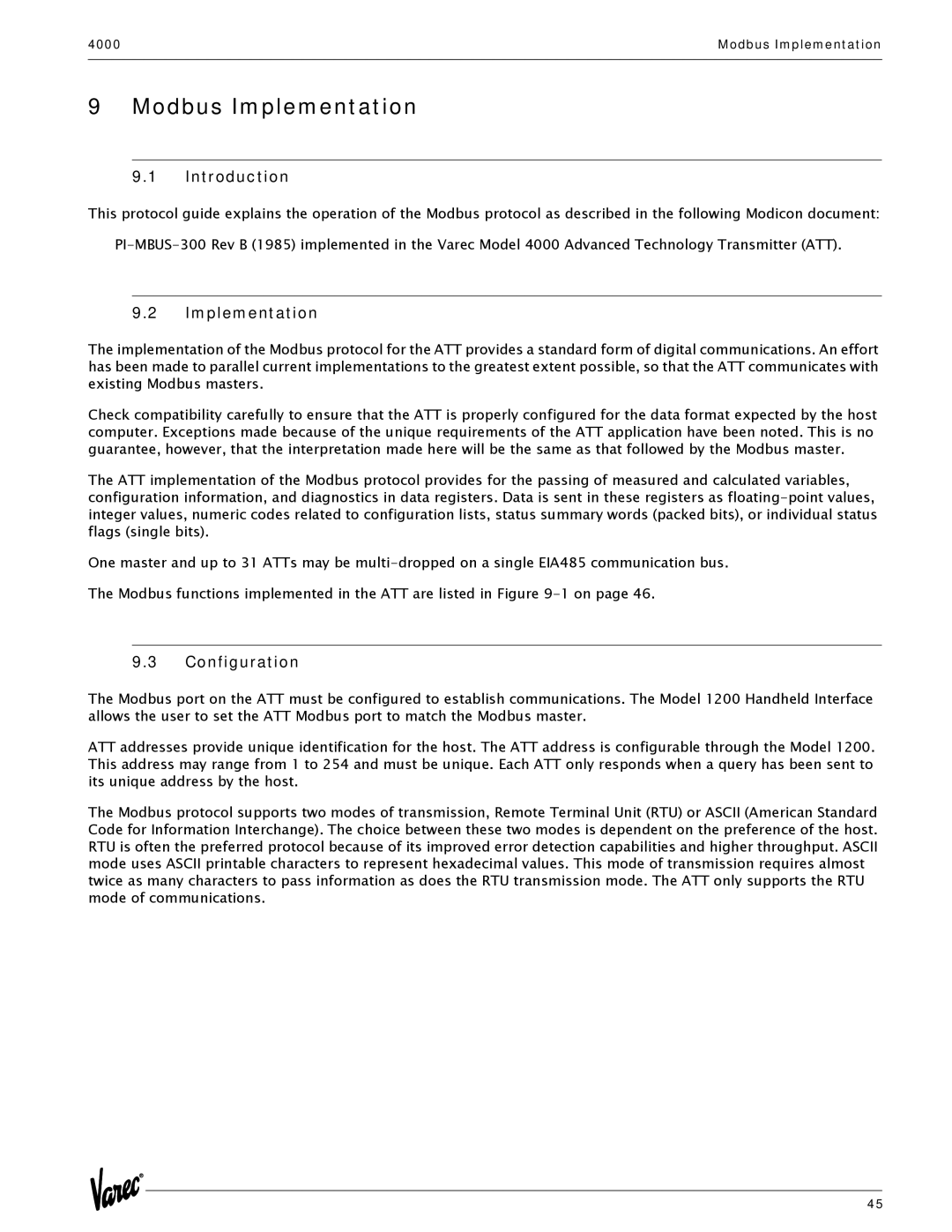
4000 | Modbus Implementation |
|
|
9 Modbus Implementation
9.1Introduction
This protocol guide explains the operation of the Modbus protocol as described in the following Modicon document:
9.2Implementation
The implementation of the Modbus protocol for the ATT provides a standard form of digital communications. An effort has been made to parallel current implementations to the greatest extent possible, so that the ATT communicates with existing Modbus masters.
Check compatibility carefully to ensure that the ATT is properly configured for the data format expected by the host computer. Exceptions made because of the unique requirements of the ATT application have been noted. This is no guarantee, however, that the interpretation made here will be the same as that followed by the Modbus master.
The ATT implementation of the Modbus protocol provides for the passing of measured and calculated variables, configuration information, and diagnostics in data registers. Data is sent in these registers as
One master and up to 31 ATTs may be
The Modbus functions implemented in the ATT are listed in Figure
9.3Configuration
The Modbus port on the ATT must be configured to establish communications. The Model 1200 Handheld Interface allows the user to set the ATT Modbus port to match the Modbus master.
ATT addresses provide unique identification for the host. The ATT address is configurable through the Model 1200. This address may range from 1 to 254 and must be unique. Each ATT only responds when a query has been sent to its unique address by the host.
The Modbus protocol supports two modes of transmission, Remote Terminal Unit (RTU) or ASCII (American Standard Code for Information Interchange). The choice between these two modes is dependent on the preference of the host. RTU is often the preferred protocol because of its improved error detection capabilities and higher throughput. ASCII mode uses ASCII printable characters to represent hexadecimal values. This mode of transmission requires almost twice as many characters to pass information as does the RTU transmission mode. The ATT only supports the RTU mode of communications.
45
